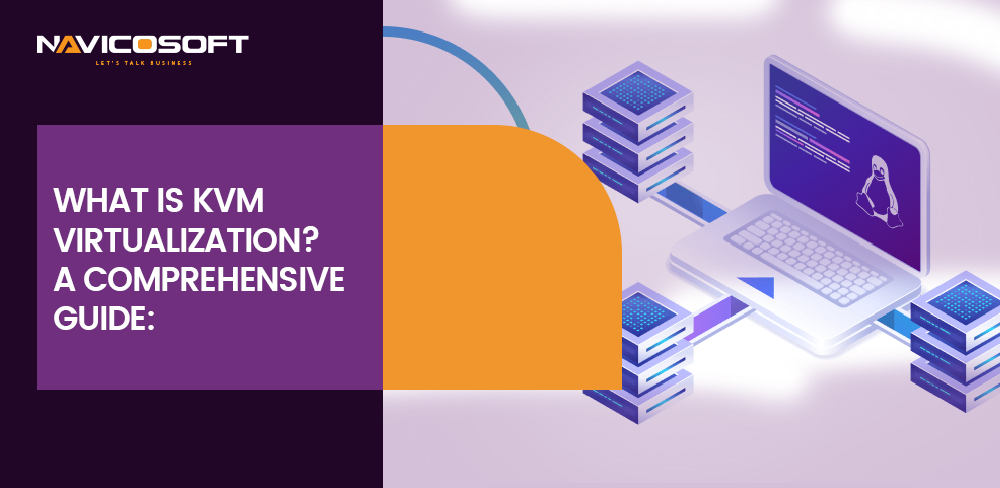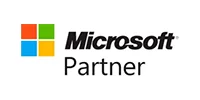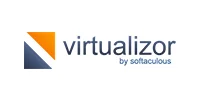Hosting services with real-time fast performance?

What is KVM Virtualization? A Comprehensive Guide
Virtualization in corporate systems is a technological advancement with a cost-effective and energy-efficient approach. This dynamic technology increases the scalability of the resources for business development and running applications in a secure environment. Among all the best virtualization technologies available, KVM virtualization stands out due to its performance, integration, and flexibility with the Linux kernel.
This open-source virtualization is playing its role to enhance the capabilities of businesses to meet the evolving demands of the digital era. The introduction of KVM has made developer’s work easy and has improved the development cycle as well. This article will explore KVM virtualization and its advantages on VPS Hosting easily. You will be able to understand how virtualization fosters collaboration and continuously improves performance.
What is Virtualization?
Virtualization is a superpower technology that creates software-based versions of physical computing resources. It allows a computer to do multiple computer’s jobs and creates a single computer within a computer. It can run many operating systems and applications on a single server in a secure environment. Virtualization is the foundation of cloud computing and improves efficiency, flexibility and resource utilization.
What is KVM virtualization?
Kernel-based virtual machine (KVM) is a hypervisor virtualization module that transforms the Linux operating system into a functional hypervisor. It doesn’t work like the traditional hypervisor but is built into the Linux kernel to make it a potential virtualization host. This host machine can run multiple guests or virtual machines (VMs). This popular open-source virtualization technology was announced in 2006 and, after one year, introduced as a mainline Linux version in 2007.
These virtual machines are managed by the command-line tools available within KVM. Depending on the corporation’s needs, third-party tools may be required to manage KVM virtualization in large corporate networks. This allows VPS to function independently for more robust isolation and increases resource allocation and customizability from other solutions.
Core Components of KVM:
KVM comprises two main modules or components: the user-space component or QEMU and the KVM kernel module or Linux kernel.
Linux Kernel Module:
The KVM kernel or Linux kernel module acts as a hypervisor and plays a vital role in executing, managing, and creating VMs. It efficiently manages VM infrastructure and memory visualization tasks along with low-level CPU. To enable performance, it allows direct access to hardware resources using hardware extensions or modern processors.
QEMU or user-space component:
This quick emulator works with the KVM kernel module to provide excellent emulation for operating systems. It emulates various guest operating systems, including non-x86 architectures, Linux variations, and Windows. QEMU can handle the emulation of virtual devices for wider VM compatibility. Furthermore, it offers tools for controlling, managing and creating VMs.
How Does KVM Work?
First, KVM converts Linux into a type-1 (bare-meta) hypervisor. All hypervisors require some operating systems to run VMs, such as device drivers, security managers, a network stack, memory managers, process schedulers, input/output (I/O) stacks, device drivers, and many others. Every VM is implemented with dedicated virtual hardware like a disc, network card, memory, CPU, and graphics adapter.
In the creation of VMs with the help of KVM. The following steps occur;
Resource Allocation: KVM allocates the necessary resources, such as a portion of the host’s CPU, memory, and storage, for essential performance to VMs.
Hardware Abstraction: KVM and QEMU manage the guest operating system inside the VMs by interfacing with hardware components.
Execution: In the case of physical machines, guest OS runs with KVM to offer efficient execution and isolation from others
Benefits of KVM virtualization in VPS
For better performance and stability, KVM virtualization technology provides separate resources to each VPS, sharing a single host server. This secures the foundation for VPS hosting and increases users’ degree of control for users. This quality makes KVM VPS better and different from others.
Near-Native Performance:
KVM virtualization in VPS can deliver near-native performance for VMs, making it perfect for application responsiveness, which is crucial for business development. It makes the performance of VMs running on a KVM VPS the same as if running directly on the physical hardware. This high performance is achieved due to KVM hardware virtualization extensions on modern CPUs. These extensions offload the tasks to hardware, boosting performance.
Improved Security and Isolation:
The other key benefit of KVM VPS is that it improves security and reduces risk by separating virtual machines from others. It gives each VM its own secure environment free from malware and security breaches. The independent system also protects the other VMS from malware if one VM is prone to viruses or any such issue. Each VM has its own allocated resources that won’t impact the performance of the other one.
Greater Flexibility:
KVM provides great flexibility to users for customization and software installation according to their own needs. Due to KVM VPS, users can customize and control the operating system and make changes in applications for a secure environment. It doesn’t allow the involvement of third parties over system configurations.
Scalability:
KVM virtualization allows you to scale your resources according to the growth of your VPS’s needs. With business fluctuations, the scalability of CPU, RAM, and storage is crucial to meet market demands. If our website is experiencing more traffic, you can add more RAM and storage according to your VPS. Similarly, you can also scale down on resources to save more.
Root Access and Control:
A significant advantage of KVM virtualization on VPS is that it allows root access with a high control level over the virtual server. Users can easily configure the OS and install software by controlling the server environment. The user can easily make specific changes according to the need to advance. It allows deep customization over resources and the server environment.
Open-Source and Community Support:
KVM virtualization is an open-source technology, provides free software to users. Users can easily use and modify the code, and it is also verifiable. Due to this, users can have complete confidence in the security and functionality of the technology. It fosters a large community to contribute to development and improvement for fast issue resolution and compatibility with software tools.
Cloud Compatibility:
KVM virtualization has excellent cloud-based infrastructure compatibility. It allows the migration of VMs between different cloud providers. For future deployment, users can quickly move VMS to a cloud provider with more capacity. The KVM VPS compatibility makes it more flexible and predictable for future VM solutions.
Cost-Effectiveness:
KVM, being open source, eliminates the extra expense of dealing with virtualization solutions. It also saves costs for additional resources that you may not use because it allows efficient resource allocation. This quality makes it an attractive option for budget-conscious businesses and the best option for small and medium-sized enterprises (SMEs).
KVM’s Impact Across Industries: Real World Applications:
Kernel-based virtual machine (KVM) technology is revolutionizing the virtual private server VPS market and leading to significant growth in industry.
Development and Testing:
KVM has made developer’s work easy by introducing a single server for running virtual machines. KVM virtualization can run multiple isolated virtual machines in a secure environment without disturbing the work of others. It has made it an ideal choice for developers who can create and test software without affecting other software or VMs in isolated environments. The risk of bugs and malware has been reduced, and development cycles for better performance and growth with better quality software for businesses have been fostered.
Strengthen Cloud Computing
Cloud computing has become a cornerstone of modern business operations. It offers more flexibility and scalability to support workloads, and in this way, it plays a crucial role in business development. KVM virtualization has made it a key component of powering the businesses’ infrastructure. Most leading cloud providers, such as IBM cloud and Google Cloud, use KVM to facilitate their users with the best experience.
Data Center Efficiency
Data centers support all the critical services and applications to improve resource utilization, which is the backbone of IT. KVM virtualization helps the developers improve the data center efficiency by using server consolidation. KVM also helps businesses to reduce the cost of hardware, minimize the data center footprint, and lower energy consumption.
Drive Innovation in Edge Computing
Edge computing brings computation and data storage closer to the required location. It helps to improve performance and reduce latency. KVM virtualization comes with lightweight and flexible architecture, making it the best solution for edge computing environments. Deployment of KVM-based VMs at the edges allows businesses to process data by reducing the load on central data centers. It helps to deliver faster and more responsive services for business growth.
Facilitate Remote Work and VDI
In recent years, virtual desktop infrastructure and remote work have become popular, supported by the need for flexibility and continuity in global disruptions. KVM virtualization has enabled the secure and efficient VDI solutions, supporting remote work initiatives and creating more opportunities.
DevOps and CI/CD Pipelines
These are the essential tools for delivering high-quality software. They are crucial for software development, and KVM virtualization supports this with a reproducible and isolated environment for different functions. KVM’s compatibility with other platforms, such as Docker and Kubernetes, offers seamless integration of VMs and supports hybrid environments for applications transition.
Challenges and Considerations:
While KVM virtualization offers numerous benefits, there are many considerations that companies have to consider. The businesses have to deal with the following challenges with KVM virtualization.
Resource Management:
Efficient resource management is crucial for good performance. Businesses may face resource management issues, so it is better to avoid overcommitment. Companies must monitor resources and implement better policies to deal with workload demands.
Security:
Though KVM virtualization facilitates the user with many security features, more is needed. So, looking for additional security measures for a secure and protective environment is essential. It is necessary to focus on different security plans, such as access controls, regular patching, and network segmentation.
Compatibility:
Businesses must manage performance by testing operating systems for wide support. For good compatibility, companies need to validate workload.
Management Complexity:
It is complex to manage many VMs in a diverse environment. So, businesses should focus on management tools and frameworks to streamline operations.
Conclusion:
KVM virtualization technology is the gateway to flexibility and efficiency that has revolutionized business operations and management systems. KVM technology has driven innovation and efficiency in various industries. Businesses can achieve more progress and development by understanding core components, advantages, and challenges related to KVM virtualization. It enables companies to unlock new opportunities and get rid of the complexities of the digital age for growth and innovation.
FAQs:
Does KVM support full virtualization?
Kernel-based virtual machines offer full virtualization technology that allows VPS to work independently. It provides a complete virtual environment for operating systems on the host machine.
What OS does KVM support?
KVM supports a large variety of guest operating systems, including different versions of Windows, BSD derivatives, and Linux distributions, along with ReactOS, Plan 9, AROS, and macOS.
What protocol does KVM use?
The concept of protocol does not directly apply to KVM, because virtualization doesn’t rely on single software for information. KVM mostly uses Internet protocol (IP). It uses protocol switches to convert and distribute signals.
Can Windows run KVM?
KM is a Linux kernel-based module that can’t be installed on Windows. Ito run KM tool chains on Windows, you will need to run Linux VM on Windows.













